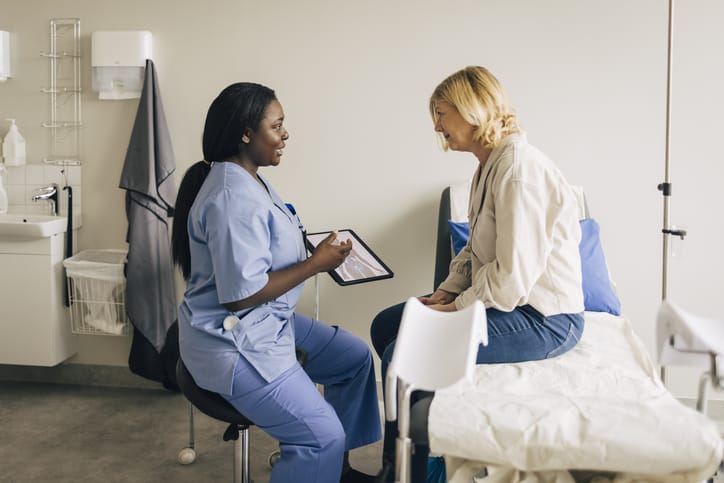An endometrial biopsy is a relatively quick, in-office procedure in which a healthcare provider removes a small piece of tissue from your uterus lining, called the endometrium, to evaluate under a microscope.
It’s usually recommended when a woman experiences abnormal vaginal bleeding, especially after menopause, and to help diagnose issues like fibroids, polyps, infections and endometrial cancer (EC).
While a biopsy may seem intimidating for some patients, understanding what the procedure involves and how to prepare can help ease anxiety you might have.
Learn more about EC testing and diagnosis
Why an endometrial biopsy is done
Your doctor may recommend an endometrial biopsy to help them understand any symptoms you’re having. It can also help them confirm suspicions from other tests, like an ultrasound or Pap smear, so they can make an accurate diagnosis.
Reasons a healthcare provider might suggest an endometrial biopsy include:
- Heavy or irregular menstrual bleeding
- Bleeding after menopause
- Thickened endometrial lining seen on an ultrasound
- Pap smear results that show irregular uterine cells
How to prepare
There’s not much you need to do to prepare for an endometrial biopsy. Make sure to tell your doctor about any medications or supplements you’re taking so they can let you know if you need to stop them before your appointment.
Your doctor might recommend taking a nonsteroidal anti-inflammatory drug (NSAID) before the procedure to help with any pain that may occur.
What to expect during the procedure
An endometrial biopsy is typically performed at your gynecologist’s office or another outpatient facility without general anesthesia, although a local anesthetic may be used to reduce discomfort.
Here’s a general idea of what happens:
- Preparation: You’ll undress from the waist down and lie back on the exam table with your feet in stirrups, like you would for a pelvic exam or a Pap smear.
- Cervical access: Your doctor inserts a speculum into your vagina to view the cervix and may cleanse the area with an antiseptic solution. In some cases, a tenaculum (a small instrument) is used to hold the cervix steady during the procedure.
- Biopsy: Your doctor will then insert a thin, flexible suction tube through your cervix and into your uterus. While gently moving it around, they’ll apply suction to collect a small sample of endometrial tissue. You may feel cramping or a tugging or pulling sensation during this step.
- Completion: Once the sample is collected, the instruments are removed, and you’ll be able to rest briefly before going home.The whole procedure takes around 15 minutes. Your provider then sends the samples to a pathologist to analyze the cells.
What to expect after the procedure
After the procedure, you’ll be able to drive home and get back to your day. Vaginal bleeding and cramping may occur, but shouldn’t last longer than a few days. It’s a good idea to wear a pad when leaving the doctor’s office and take an over-the-counter pain reliever, such as ibuprofen or acetaminophen, to help with cramping.
Complications are rare, but contact your doctor if you experience any of the following symptoms:
- Heavy bleeding (soaking more than one pad per hour) or bleeding that lasts more than a few days
- Fever or chills
- Foul-smelling vaginal discharge
- Severe abdominal pain
Results are usually available within a week. Based on the findings, your doctor will discuss next steps, which can include further testing or treatment.
